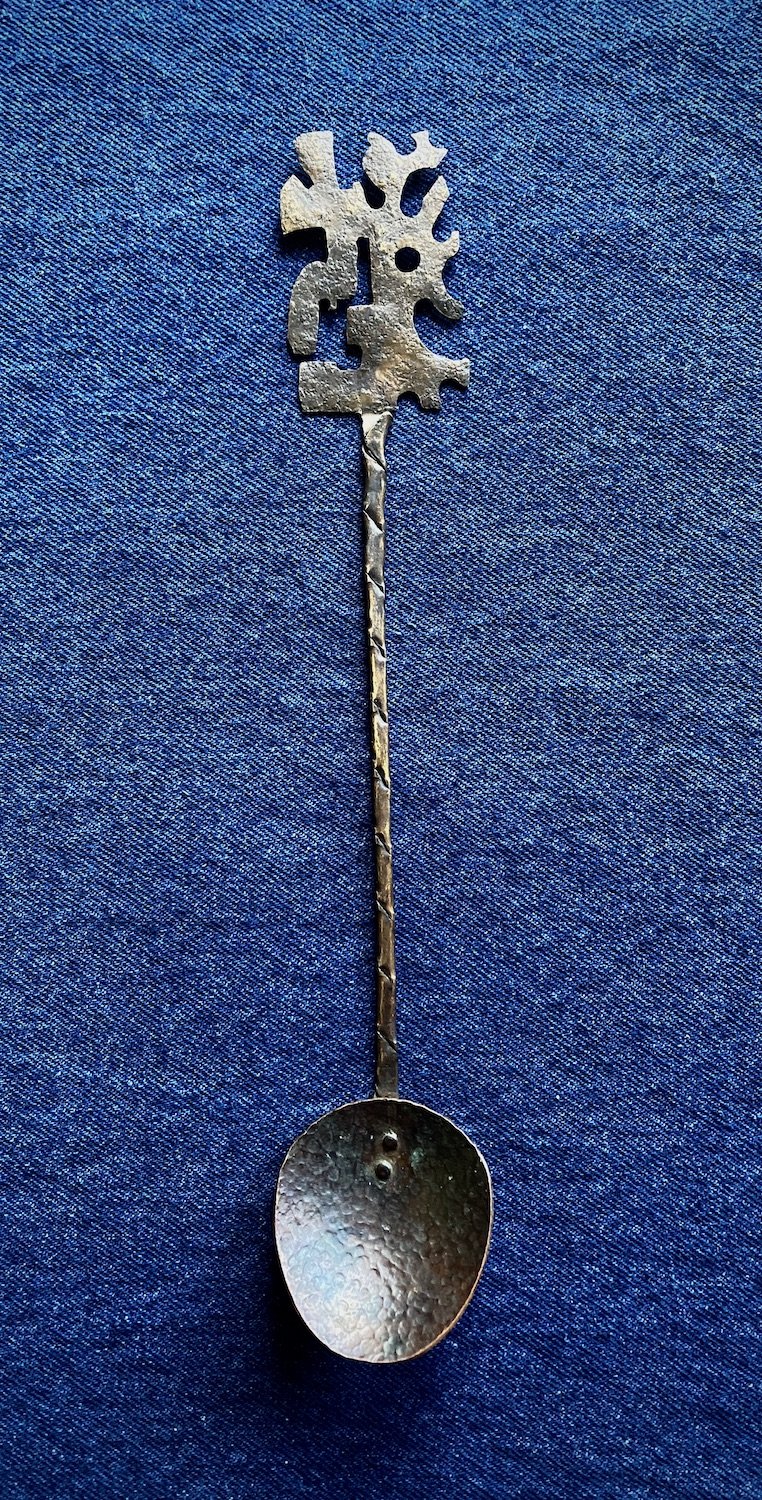 Image 1 of 4
Image 1 of 4

 Image 2 of 4
Image 2 of 4

 Image 3 of 4
Image 3 of 4

 Image 4 of 4
Image 4 of 4





Mexican Brutalist Serving Spoon
Brutalism (from the French beton brut — “raw concrete”) is an anti-decorative design philosophy, rooted in post-WWII utopian socialism. Originally an architectural term, brutalist concepts began to influence industrial and graphic design in the 1960s-70s; and even (ironically) the “decorative” arts, such as jewelry and ceramics. Brutalist objects exhibit certain characteristics, such as an emphasis on bare functionality, monochromatic color schemes, repetitive design elements, and rectilinear edges.
Brutalism is usually associated with Europe and the U.S. Why then, does sunny Mexico have such a strong brutalist tradition? A cursory look at pre-Columbian art and architecture reveals that “brutalist” ideas have deep roots there. It is evident in the geometric stonework of temples and altars, and in the rectilinear designs seen on ceramics and other objects. This style may derive from the aesthetics of woven fabrics, which tend to be repetitive and geometric by nature. Or perhaps it derives from pure love of design, and experimentation.
This brass spoon combines very midcentury brutalist elements with more “artisanal” ones, to wonderful effect. 12” long x 1.75” wide.
Brutalism (from the French beton brut — “raw concrete”) is an anti-decorative design philosophy, rooted in post-WWII utopian socialism. Originally an architectural term, brutalist concepts began to influence industrial and graphic design in the 1960s-70s; and even (ironically) the “decorative” arts, such as jewelry and ceramics. Brutalist objects exhibit certain characteristics, such as an emphasis on bare functionality, monochromatic color schemes, repetitive design elements, and rectilinear edges.
Brutalism is usually associated with Europe and the U.S. Why then, does sunny Mexico have such a strong brutalist tradition? A cursory look at pre-Columbian art and architecture reveals that “brutalist” ideas have deep roots there. It is evident in the geometric stonework of temples and altars, and in the rectilinear designs seen on ceramics and other objects. This style may derive from the aesthetics of woven fabrics, which tend to be repetitive and geometric by nature. Or perhaps it derives from pure love of design, and experimentation.
This brass spoon combines very midcentury brutalist elements with more “artisanal” ones, to wonderful effect. 12” long x 1.75” wide.